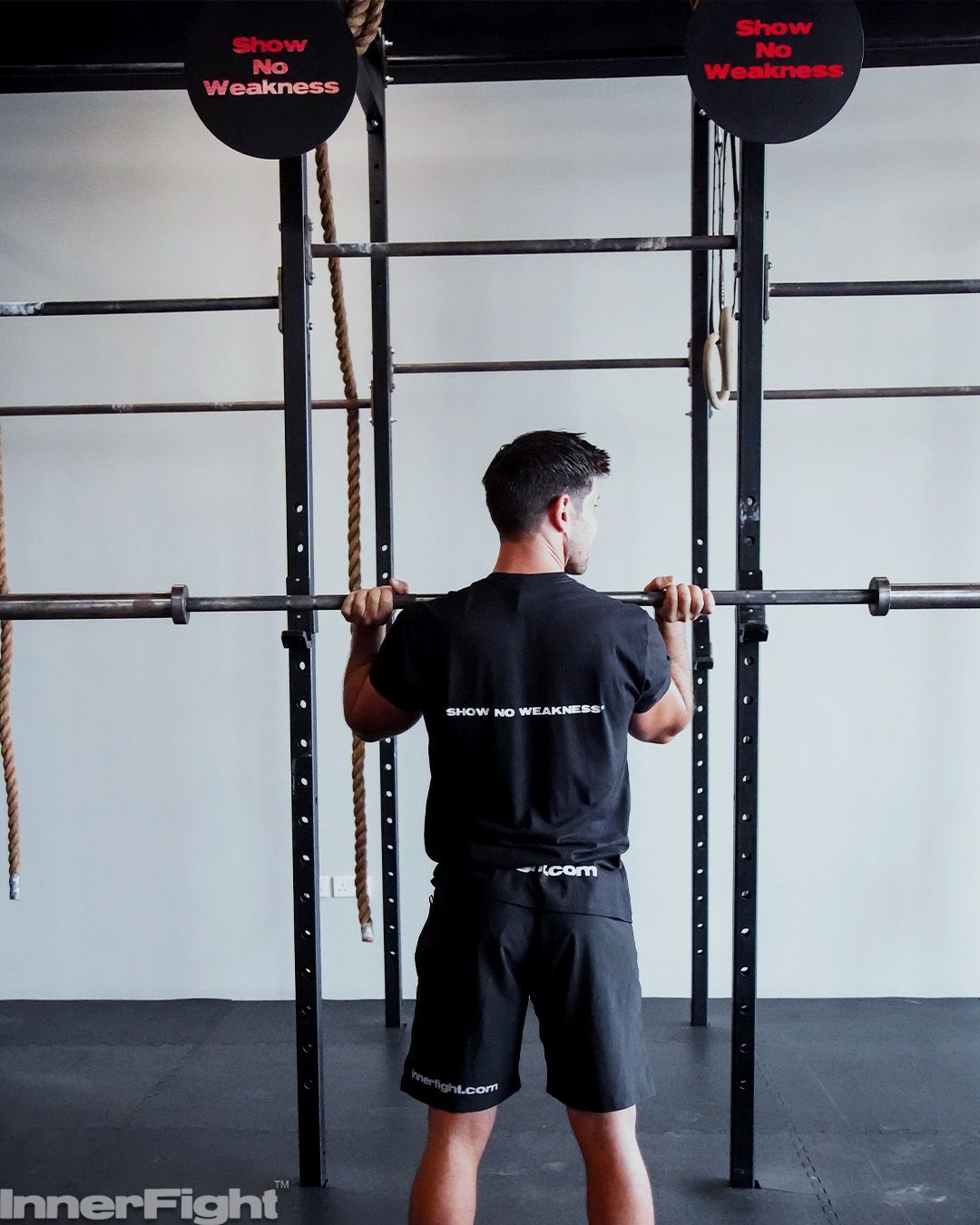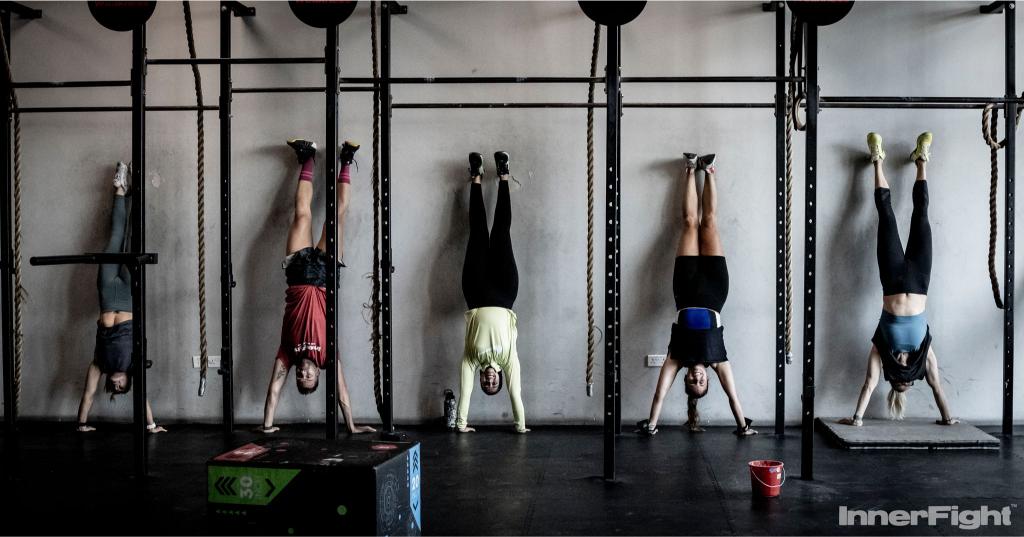Lower Back Pain and Working Out
.jpg)
Lower Back Pain and Working out Safely
Lower back pain is the leading cause of movement limitation worldwide, impacting half a billion people. It can start with subtle morning stiffness, progressing to aches, pains and even immobility. The physical discomfort creates a mental dilemma around lower back pain and working out: continue exercising and risk making it worse, or stop training and watch your gains disappear.
But the real challenge isn't the pain itself - it's knowing when movement will help, when modifications are needed, and when rest is truly necessary. Should you maintain your routine despite the discomfort, or is continuing to train making everything worse?
Pushing through the wrong type of pain can turn a minor issue into a chronic limitation. Stop moving altogether, and you risk weakening the muscles supporting your spine. The solution is learning to interpret your body's signals, then responding strategically.
The Professional Paradox
Lower back pain and working out are not mutually exclusive, but the nagging discomfort easily becomes the excuse destroying your mental game. You’re crushing it in business, maintaining discipline with your schedule, but that persistent ache is starting to dictate whether you hit the gym or hit the couch.
Here’s what most people won’t tell you: 70% of desk workers experience back pain, but only 20% successfully modify their training approach. The other 80%? They stop, get weaker, and it makes the problem worse.
What if your discomfort wasn’t a limitation? What if it became your competitive advantage?
The Cost of Inaction
What happens when ambitious professionals ignore their physical infrastructure? Like neglecting maintenance on a high-performance vehicle, the breakdown is inevitable and expensive. Professionals who stop training due to back pain experience:
- 40% decline in cardiovascular fitness within 8 weeks
- Increased stress and decreased mental clarity
- Higher risk of more serious injury when they do return
- Lost momentum that takes months to rebuild
The determination to succeed in business creates unique physical challenges. You sit longer, stress more, sleep less, and push harder to perform. This combination makes having lower back pain and working out a common source of frustration.
The ROI of Investing in Infrastructure
Here’s the performance angle most people miss: addressing your back pain strategically doesn’t just solve a problem, it creates a foundation for performance that your competitors don’t have.
Investment in Infrastructure Pays Dividends
Think of lumbar logistics like upgrading business systems. The initial effort requires focus and resources, but the long-term returns compound dramatically. Professionals who address back pain report:
- Improved focus and energy
- Better stress resilience
- Enhanced physical confidence
- More mental resources
Focus on Performance
Chronic pain creates a constant stress response that drains resources. When you resolve movement dysfunction, blood flow improves, muscle tension decreases, and your nervous system can focus on performance over protection.
When your body stops wasting energy compensating for dysfunction it delivers big benefits:
- Improved circulation
- Better sleep quality
- Enhanced healing ability
- Reduce inflammation
- Enhanced energy efficiency
The ROI of Endurance
Psychological strength transfers directly to business performance. An increasing number of executives and entrepreneurs pursue endurance goals to build resilience. Active professionals with back pain need strategic training approaches that build, rather than break down, their systems.
The risks of avoiding or ignoring lower back pain and working out extend beyond missed gym sessions. Consider a professional earning $90k annually who loses just 15% productivity due to pain-related fatigue, poor sleep, and reduced mental clarity – that's $1,125 vanishing from your paycheck every month, like adding a second mortgage payment.
Factor in medical expenses, missed opportunities during flare-ups, and the compounding effect of declining physical capacity, and the cost of inaction is staggering.
The Hidden Cost of Avoidance
Most professionals underestimate the expense of unresolved conflicts between lower back pain and working out. Beyond the obvious discomfort lies a cascade of hidden costs from poor sleep, reduced cognitive performance from chronic stress responses.
Employees with chronic back pain cost organizations $13,000 annually in reduced productivity and increased healthcare costs. For high earners, these numbers can be off the charts in terms of missed multi-million-dollar opportunities.
Strategic investment in back strength, posture and mobility doesn't just improve quality of life - it protects earning potential and competitive advantage in demanding professional landscapes.
Understanding Pain Signals (RAG-style)
Your body has a sophisticated performance monitoring system, processing over 11 million bits of sensory data per second - that's like reading a 300-page book every two seconds. Fortunately, most of the data processing runs in the background, but pain signals demand immediate attention.
Learning to correctly interpret your body’s sensory signals is crucial for managing lower back pain and working out safely, and effectively.
Green Light Symptoms (Proceed with Training)
- Muscle stiffness that improves with gentle movement
- End-of-day tightness that feels better after stretching
- Post-sitting discomfort that disappears during warm-up
- General fatigue without sharp sensations
Yellow Light Symptoms (Modify Your Approach)
- Exercise-related discomfort that appears during training but doesn’t worsen
- Morning stiffness that takes 30+ minutes to resolve
- Discomfort that rates 3-5 out of 10 on intensity
- Symptoms that improve throughout your workout
Red Light Symptoms (Seek Professional Assessment)
- Sharp, shooting pain that stops you mid-movement
- Numbness or tingling down your legs
- Pain that worsens with movement
- Morning stiffness that persists throughout the day
Never Ignore a Red Light: The Risks of Pushing Through
Ignoring serious warning signs isn’t just about immediate pain - it’s about protecting your ability to perform. Professionals who push through red light symptoms risk losing employment opportunities, missing important events, or requiring emergency interventions that could sideline them for months.
The smart play: address yellow light symptoms before they become red light emergencies. This turns the challenge of lower back pain and working out into an opportunity for building sustainable performance habits.
Training Modification Protocols
The key to successful lower back pain and working out isn't stopping - it's adapting intelligently. These modifications allow you to maintain fitness goals and momentum while respecting your body's current limitations.
Exercises to Avoid
- Sit-ups or crunches (compress spine)
- Overhead pressing (if experiencing upper back issues)
- Heavy deadlifts from floor (until movement patterns improve)
- High-impact activities like running or jumping
What to do Instead
- Partial range movements that feel comfortable
- Supported exercises using machines or benches
- Isometric holds that build strength without movement
- Low-impact cardio that maintains fitness
CrossFit Adaptations
- Replace back squats with goblet squats or box squats
- Substitute conventional deadlifts with trap bar deadlifts or rack pulls
- Modify burpees to step-ups or mountain climbers
- Use ring rows instead of pull-ups when experiencing upper back tension
Strength Training Modifications
- Focus on unilateral (single-side) movements to address imbalances
- Use machines for support when free weights aggravate symptoms
- Emphasize horizontal pulling (rows) over vertical pulling initially
- Incorporate isometric holds to build stability without movement stress
Cardio Adaptations
- Low-impact options: swimming, cycling, or walking on incline
- Interval training to maintain intensity while reducing duration
- Water-based exercises for resistance without joint stress
Successfully managing lower back pain and working out means viewing modifications as tools for optimisation, not compromise. Intelligent adaptations can also reveal movement patterns and weaknesses you didn't know existed. Addressing movement limitations should can become part of your long-term fitness goals.
Many clients find that addressing back issues improves their overall performance and injury resilience.
The Professional Playbook
Back issues usually start at your desk, not in the gym. The average professional spends 9+ hours sitting, creating a cascade of dysfunction:
- Hip flexors shorten and tighten
- Glutes “turn off” and stop functioning properly
- Deep core muscles weaken from lack of activation
- Thoracic spine rounds forward, creating compensations
Workspace Ergonomics
Prevention starts with where you spend most of your day, ensure you protect your spine.
Monitor and Chair Setup:
- Top of screen at eye level to prevent forward head posture
- Feet flat on floor with knees at 90-degree angles
- Back support maintaining natural lumbar curve
- Armrests supporting elbows without raising shoulders
Movement Breaks:
Set a timer for every 45 minutes and cycle through these positions:
1. Standard sitting: Back against chair, engaging core lightly
2. Forward lean: Lean forward slightly, activating postural muscles
3. Standing break: 2-3 minutes of movement and stretching
4. Posture reset: Shoulder blade squeezes and neck stretches
15-Minute Core Protocol
Essential movements that address the weak core that causes back pain:
- Dead bugs (30 seconds): Lying on back, neutral spine, moving opposite arm and leg
- Bird dogs (30 seconds): Hands and knees, extend opposite arm and leg, keep hips square
- Modified planks (30 seconds): Start on knees, progress to full plank based on comfort
- Glute bridges (30 seconds): Lying on back, lift hips while squeezing glutes
- Cat-cow stretches (30 seconds): On hands and knees, gently arch and round spine
Repeat circuit 2-3 times. The goal: movement quality over intensity.
Long-term Maintenance
Sustainable results come from systematic habits, not sporadic intense efforts. Prevention beats rehabilitation every time.
Daily non-negotiables:
- 5-10 minutes of mobility work
- Hourly movement breaks during work
- Consistent sleep and stress management
Monthly Assessments:
- Movement quality checks
- Load progression evaluations
- Program adjustments based on life demands
- Preventive maintenance protocols
Seek Medical Attention If:
- Red light symptoms persist more than 72 hours
- Neurological symptoms (numbness, tingling, weakness)
- Symptoms significantly impact work or sleep
Support for High Performers
InnerFight coaches specialise in working with people who refuse to let physical limitations derail their goals. We understand the unique demands, and create personal training protocols to fit your schedule while addressing your specific needs.
The InnerFight community includes ambitious professionals who understand the challenge of balancing peak performance across all areas of life. Our experienced coaches can help you navigate lower back pain and working out successfully.
Ready to transform limitation into strength? Don’t let back pain dictate your training. Get personalised support to identify and overcome limitations, with a training plan that works with your lifestyle, not against it.
Discover how strategic modifications can help build the strongest, most resilient version of yourself. Your back pain isn’t a life sentence - it’s your body’s way of saying it’s ready to get stronger.
About InnerFight
InnerFight is a premier fitness and endurance coaching company based in Dubai. Whether you’re a busy professional seeking peak performance or an athlete pursuing ambitious dreams, InnerFight offers a supportive community where hard work, honesty, and simplicity drive extraordinary results.
We share insights, advice, tips and success stories to empower your fitness journey:
- The InnerFight Podcast features fitness, mindset, and personal stories
- The Endurance Podcast covers running, cycling, and triathlon training
- The InnerFight Blog delivers expert articles from certified coaches
Follow us on LinkedIn, Instagram, Facebook, and X for weekly motivation, training tips, and behind-the-scenes content from our Dubai community and international training camps.
If you’re based in Dubai, visit our 5,000 square foot facility to experience our world-class strength and conditioning classes, personal training, and endurance coaching. Receive 3 free sessions to experience our approach firsthand.
Fun - Honesty - Simplicity - SMASH LIFE - Mental Toughness - Hard Work



.avif)
.jpg)
.avif)


.jpg)

.jpg)

